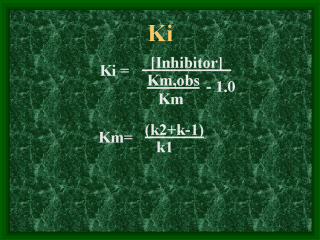 |
Ki seems to be a quite useful
value. If Km describes the likelihood for a reaction proceed forward, then Ki can help
predict competitive inhibition. The higher the Ki, the greater the inhibition. The Ki
values for isoniazid, fluconazole, and diltiazem are 73, 15, and 2 respectively. This
might lead one to expect that a patient taking diltiazem for high blood pressure might
experience hypotensive episodes when initiating isoniazid therapy since isoniazid has a
higher Ki, binds more readily and prevents the metabolism of diltiazem, thus raising its
levels.
|
